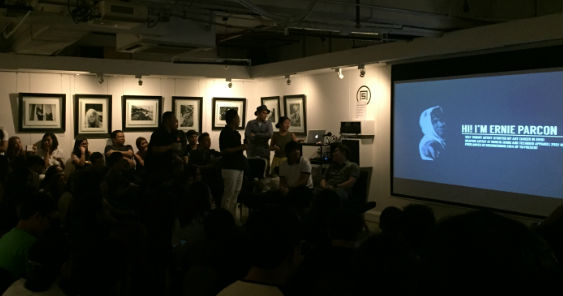by Adrienne Dy
MANILA – Good art is not usually equated with good money. In fact, that’s probably the reason the term “starving artist” was coined. It’s almost romantic – giving up everything to stay true to beauty, poetry, and everything that we live for but cannot live on. Right?
Not really – and thankfully so. In fact, one can almost argue that this is the age of creative prosperity. Ahead of his time, Andy Warhol already called it: “Making money is art, and working is art, and good business is the best art.” In his book Think Like an Artist, BBC’s Arts Editor Will Gompertz claims that artists are actually entrepreneurs. “They are willing to stake everything for the chance to do it alone, and make the work they feel compelled to create.”
In other words, creatives are getting smarter. A new breed of designers, illustrators and digital artists are storming the industry on all fronts, setting up shop in various ways: freelance, crowdsourcing platforms, corporation-based, or established design firm. And representatives from all of these gathered together last January 28 at the A Space, for TALKS+Graphika Manila: Pricing Practices in Illustration and Design.
It was money matters, yes, but even the approach was decidedly creative. In punchy, type-savvy and beautifully minimalist slides, some of the biggest names in design presented their strategies for fair pricing. The open forum, moderated by Robert Alejandro, featured discussions by Bru Sim-Nada (Electrolychee), Dan Matutina, AJ Dimarucot, Russel Vergara (Vgrafiks), Liza Flores (Studio Dialogo) and Mon Punzalan (Team Manila).
Interestingly, newcomers into the scene were also included in the panel. Two young graphic designers shared how crowdsourcing platform Design Cloud propelled them to modest popularity in terms of logo creation. Design Cloud holds regular “contests” for logo and design, awarding winners with anywhere from $200 to over $1,000. “I make anywhere from 10 to 15 logos at a time, and have successfully made it a steady source of income to support myself, and my family,” one of them claimed. It was an eye-opener for options made available only in the age of the Internet.
The design greats, on the other hand, imparted wisdom culled from decades of grappling with the challenges of the industry. Some, like Dimarucot and Alejandro, were lone wolves who fought their way up by banking on networks, sheer talent and a strong work ethic. Others worked in groups, establishing names for themselves one successful project at a time. Happy clients stay loyal, and beget new clients, shared Sim-Nada. Flores, on her part, explained how putting a process into the design work helped her and her partner Abi Goy transition from sideline work to putting up their own studio. Still pushing their limits, one of their latest projects was the environmental design of the new Cebu Pacific headquarters.
So how do they put a price on their work? It’s something that creatives really struggle with, perhaps because they always invest a little of themselves in every project they undertake. Still, it must be done.
Several methods were presented, with usage emerging as a common theme. Where will the work be used – printed collaterals? Campaign materials? Point of purchase? In-store graphics? There is also the question of duration. Materials for one-time use naturally fetch lower prices than those that will be made available “in perpetuity.” Ownership and copyright issues should also be considered, especially when tackling the derivatives of the work. Dimarucot was emphatic about this – his working files fetch a much higher price than flattened, final artwork.
Nothing fills creatives with as much dread as the prospect of having to use math, but equations were also presented as benchmarks to consider. Here are a couple of them:
Price = own cost (operating costs) + value based on client (project size, return of investment) + project variables (timeline, usage).
Or, an hourly rate, computed as: Capital and operating expenses + reasonable yearly salary divided by 1610 yearly working hours + reasonable profit margin (typically 10-15%)
But more than the figures, the intangibles also factored largely into the equation. Invariably, the panelists agreed on one thing – the importance of doing work for the sheer joy of it. Electrolychee’s costing takes into consideration the amount of learning they could get from taking on projects, and their place and value in a growing company portfolio.
After all, one of the biggest ambitions artists work towards is the luxury of creating even more art. Gompertz writes, “Profit buys freedom. Freedom provides time. And time, for an artist, is the most valuable of commodities.” One of the speakers summed it up nicely, “Alam kong hindi ako yayaman dito, kaya mag-eenjoy nalang ako. (I know I won’t get filthy rich through design; but I’m going to make sure I enjoy doing it.)” And that, perhaps, is the ultimate prize.








